In the first part of our interview with golden age adult film director, Leonard Kirtman, he spoke about how he pioneered a production-line approach to making softcore movies in the 1960s, using his Upper West Side brownstone in New York to film multiple movies simultaneously. Overnight, Leonard became king of quickie-cheapie-nudie films.
His success was assisted by forming a perfectly synergistic partnership with the Times Square-based distribution company, Distribpix, and together they filled adult theaters across the nation with his Kirt Films movies.
And then came the 1970s, and with it, a newly permissive environment that allowed hardcore films. It was time for Leonard to adapt his production model and deal with the new commercial and legal realities – and opportunities – that were presented to him.
This is Leonard Kirtman’s story – Part 2.
———————————————————————————————————————–
Phase 2: Leonard Kirtman – Hardcore Films
In 1971, you started building a new stand-alone film studio. Where was that?
The address was 7 West 22nd St near 5th Ave. I wanted more space that I had in my house so that I could make more films at the same time. I took a lease on this place. It had 7,000 square feet.
What work did you have to do to convert it into a film studio?
I built the studio myself. I renovated it all. I started by building a primary sound stage, and then I built a second sound stage. In addition to that, I had about a dozen rooms to film in as well.
So that enabled you to continue to shoot multiple films at the same time?
Of course! I could film more than ever. In the main studio, there was a big room that I divided into two parts so I could shoot two scenes simultaneously. I could have up to 100 lights hanging from the ceiling.
Did you have your own equipment in your new studio?
Yes, three or four Arri’s and lenses to go with them. In addition, I had a full editing bay: I was one of the first people in the country to own the new Steenbeck flatbed editing suite. I’d learned to use it back in the days when I worked with the Swedish filmmaker, and I was keen to have my own after that. I set it up so that I could mix my own sound. There were two sound reels and a picture reel so I could mix those, plus I used a separate microphone for overdubs.
How much easier was it to make films once you had your new, bigger studio?
Everything was much easier – not just for making my own films. Firstly, I rented it out to other filmmakers – such as industrial and commercial companies – which meant I didn’t have to churn out as many films anymore. And secondly it attracted more people into my circle who wanted to learn and have a career in film.
It was timely, because I was building it when Deep Throat came out.
‘Deep Throat’ was released in 1972 and instantly became a big success. How was that significant for you?
It changed everything. It was a commercial necessity to shoot hardcore after that. And the market for these films became much bigger.
You were in the right place at the right time, but did it create any problems for you?
No problems – just the opportunity to make more money!
If there was a new problem, it was caused by the actors (laughs): I couldn’t use them as interchangeably as I had done before… because now, they had to cum… and there was a limit to how often you could expect any individual actor to do that in a single day.
How did you deal with that dilemma?
I did a few things. For example, I invented a cum-machine so that I could use the same actors for several sex scenes in a day. I mixed up egg whites and milk, and put it in a syringe. Nothing elaborate. Sometimes they even held a tube under their penises.
If I was desperate, I would step in and do the cum shot myself. If you filmed it as a close-up, you couldn’t tell that it was a different person.
I’ve heard a story that when you auditioned actors, you’d film them ejaculating so that you could build up a library of shots which you could use in films later.
(laughs) Well, it is true that I needed to see if a guy could perform in front of a camera. I probably filmed a few.
And Artie and Howie were happy to continue distributing your films in the new, more explicit market?
Oh yes. I remember, when I finished a batch of films, I’d call up Bunny Atlas, who worked for Artie and Howard, to tell her I had the latest films. She’d just ask, “How many cum shots have you got?”
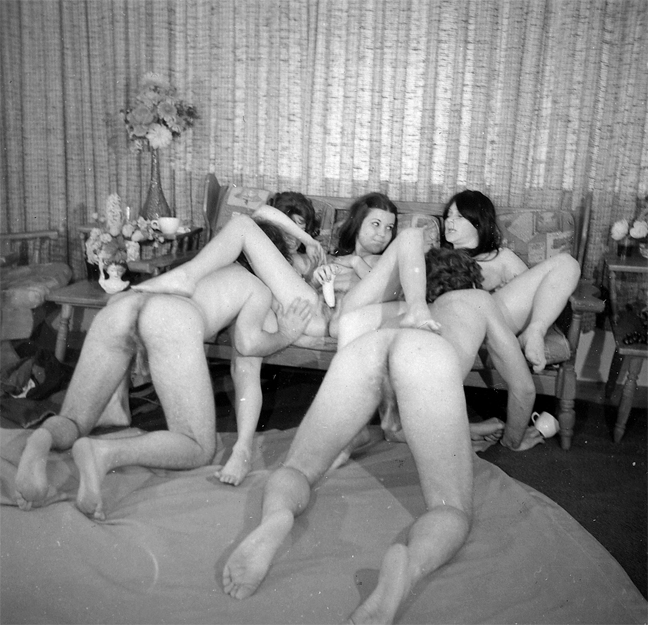 Previously unpublished Kirt Films production still (courtesy of Leonard Kirtman collection)
Previously unpublished Kirt Films production still (courtesy of Leonard Kirtman collection)
Were you concerned that the legal risk of making explicit films was greater?
That risk was always there. I was busted on a Florida shoot that we did.
Was that The Love Witch (1973)?
I can’t remember the title. I came across two surgeons in Miami who were interested in making a sex film. One had a big yacht called the ‘Sea Horse’, and the other had a big home – and so we agreed to shoot the film in both locations. Gerry Damiano gave me the name of the guy he’d used to do the Miami casting and production management of ‘Deep Throat’. That was a guy who went by the name ‘Lenny Camp.’ Lenny was experienced, so I hired him to make this film for me.
The problem was that, unbeknownst to any of us, Lenny was under surveillance by the FBI. He had a big porno ring down in Florida. So, when we finished the shoot, everyone was arrested.
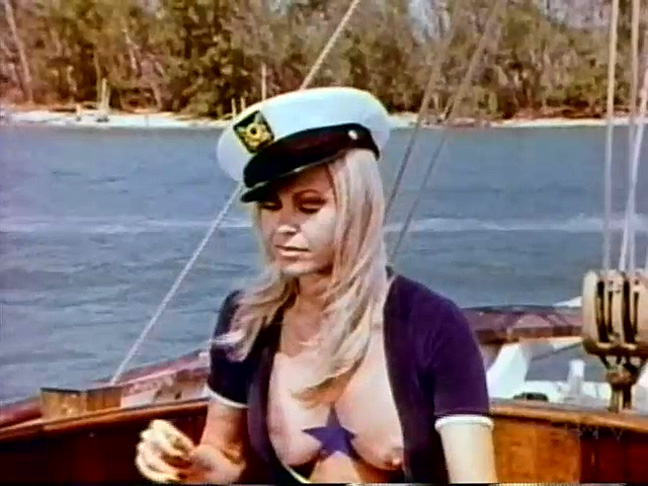 ‘The Love Witch’ (1973), aboard ‘The Sea Horse’
‘The Love Witch’ (1973), aboard ‘The Sea Horse’
What happened to everyone involved – and what happened to the footage you’d shot?
I made the footage disappear, telling everyone that it’d been stolen from a Miami apartment after we shot it.
The FBI only wanted Lenny, and he faced a long prison sentence and a big fine. The case went to trial, and Lenny was given a two-year jail sentence.
And then some of the footage miraculously reappeared… and was made into ‘The Love Witch’?
Yes, I think that was the film we got out of it. It’s a long time ago (laughs).
Did the experience make you take any extra steps to cover your tracks?
I used more made-up names for the credits so it wouldn’t be obvious that I was the one making the films.
I used so many different names, I don’t think anyone will ever figure out my complete filmography (laughs).
You started to use ‘Leo the Lion’, ‘Leon de Leon’, and ‘Leon Gucci.’
(laughs) Leo was just an abbreviation of my name, and I thought ‘Gucci’ sounded classy!
I also started using different production companies – and moving away from ‘Kirt Films’: ‘Taurus Productions’ which was one of the main ones – because Taurus is my star sign. Later, another was ‘International Film Industries.’ There were a lot of different names (laughs).
Was one of your first new identities ‘Tim Davies’? He was credited with seven or eight Kirt Films in the immediate aftermath of ‘Deep Throat.
Which films were credited to him?
Head Nurse (1973)… Fast Ball (1973)… Quick Turnover (1973) for example.
Well, those were films I made.
Then there was ‘David Sear,’ who made Intensive Care (1974) and Ape Over Love (1974).
Both of those were mine as well.
The problem is that you’re asking me who did specific roles on each film… as if these were Hollywood productions with everyone doing separate, clearly-defined roles.
The truth was that I was in charge – always. It didn’t matter if someone took the lead on one aspect or another, or got the credit on the screen: it was me telling people what to do. And sometimes other guys did take the lead directing, or with the editing or the camera work, but at the end of the day, it came down to me. Often people worked on the film but never ended up in the credits, it was… haphazard.
And the made-up names were usually generic white, middle-class, non-suspicious ones (laughs).
The actors that you used changed overnight when the films moved to hardcore. You went from having one repertory company of performers to using a different pool of actors.
Part of that was age-related. The previous generation had been in the business for five or six years, and they were part of an earlier, older group. Plus, most of them were put off by the idea of doing more explicit sex scenes, so soon they were replaced by a younger, more liberated crowd.
In that first year of hardcore films, you used the same, small group of actors – Cindy West, Alex Mann, Rachel Harris, Harry Reems, Darby Lloyd Rains – in almost every one.
That was mainly because I shot the movies over a single two-week period, and I just hired the same cast and crew. I’d already worked with Harry in softcore films.
Did you have relationships with the other adult filmmakers at the time?
Not really. I kept to myself. I knew of Joe Sarno because he worked for Distribpix. He was a talented filmmaker but, in my eyes, he had two undoings: he was slow to do explicit sex films – he was judgmental and thought they were beneath him. And secondly, he never owned his own films. Arthur just paid him a flat fee so he never made much money. I always owned my own movies.
One filmmaker that I got to know was a guy named Carlos Tobalina. I met him at a convention, I think, and we became friends. He was in the same business so it was helpful to know someone dealing with the same issues. He advised me later when I went back to the west coast.
Speaking of making money, I was intrigued to see that you were a very early pioneer of video-cassettes – back in 1973.
Oh sure! The big barrier that I faced with the films I made was shame. Shame was the problem.
How do you mean?
That is, every guy who wanted to see one of our films had to go into a porno theater. That was a risk to him because anyone could see him enter. And maybe the theater would be busted. That made it impossible for many men – who were considered upright members of society – to go and see these films.
I wanted to get my films into people’s homes to get around that problem – and the way to do that was with video cassettes.
How did you go about finding a solution?
I formed a company, Video Programs International, and found a company that could make videotapes of the library of movies I had made. I had already made over 100 titles, so I had a lot of content.
What was the technology that you used?
It was a ¾ inch tape which could be played on Sony U-Matic machines.
You were ahead of your time.
That was the problem. I went to industry fairs and conventions, and everyone liked the product. The issue was the cost of the tapes: they were around $270 a piece. That’s probably the equivalent of a tape costing over $1,000 today! That was way too much for the general public. It took another five years for the product to be viable. And then the big multi-national companies moved in and dominated the market.
You mentioned that your new studio became a focal point for filmmakers: who were examples of these people?
Guys like Victor (Milt) came to me. He came with his brother looking for experience. Victor was always more interested in making commercials.
Then there was Charles Slavens, who was a good cameraman. Ralph Ell got his start with me. He was a sweet man. Bill Milling worked for me before he made his own films. Chuck Smith did tens… hundreds of films with me! Bill Bukowski was another. Jonas Middleton worked for me for a while.
I was happy to give them all work. As long as I didn’t have to pay them (laughs).
I presume actors came in looking for work too?
Sometimes. But mostly I found them from ads I was placing, or via word of mouth.
Didn’t Annie Sprinkle get her start with you?
Oh yeah. Gerry Damiano called my studio one day, and said he had nothing going on at that moment, but he had a girlfriend that he wanted to find some work for – was I hiring?
I asked him what she was good for, and he said that she could do script work.
I said, “Sure,” as he wasn’t expecting me to pay her.
So she came in and worked quietly in the background. Then one day she asked me if she could be in a movie. I said, “Of course.” That was Annie Sprinkle. Later, she dedicated her book to me: “Thanks for the apprenticeship.”
It was Ralph Ell who used her a lot when he worked for me. I think she may have been in every one of his films.
What do you remember about Zebedy Colt?
I met Zebedy when he came looking for acting jobs. He replied to an ad I placed. He was about ten years older than me, and he’d had a career on Broadway, but he was in his mid 40s by this time and was really broke. I think he was struggling to pay his mortgage.
What was he like?
He was a strange, wonderful guy. Looked a little like Anthony Perkins. Gay. Sweet, very kind and giving. He had his obsessions – and was working through them in some of the films we made. But we became close friends. I liked him a lot.
Was it a social friendship?
We were two very different people, so under normal circumstances our paths would probably never have crossed. But when you make as many films together as we did, you spend a lot of time together and so become pretty close.
What were examples of his obsessions?
Oh, all sorts. His childhood seemed to have been troubled, and there was a lot of guilt, repression, shame. I never dug too deep, but it was clear that some weird things were going on. Fascinating guy.
But you formed a good working relationship?
Oh yes. In fact, his odd character resulted in some good films!
We worked closely together for about ten years. I could always rely on him, and he worked hard. And when it came to acting, he was… electric. He liked manic, tortured, crazy characters – which were unprecedented in sex films. So he was truly unique.
Annie and Zebedy started at the same time with you.
Yes, I can’t remember which film it was. Perhaps it was The Erotic Adventures of Surelick Holmes (1975), where Zebedy played Dr. Watson. It was a comical situation for me: in one ear, I had Annie all excited because she’d always wanted to make it with a gay guy. And in the other ear, I had Zebedy panicking that he feared he couldn’t perform with a woman. He kept saying, “I’m an actor Leonard, but this is a step too far.” I think Annie scared him.
Harry (Reems), who played Surelick Holmes, thought the whole situation was hilarious.
How different were the films you were making at this point – compared to the softcore films of five years before?
Very different. The audience was more sophisticated. You couldn’t get away with just compiling sex scene after sex scene any more. Now, you had to have plots – and they had to be elaborate and there had to be an overriding theme to the story. There had to be characters or scenes that stood out. And for a time in the mid-1970s, the films that did best had to have some element of outrageousness – or even nastiness – to them. That made them stand out from the rest of the crowd.
How did you adjust to that?
I spent longer putting the films together: I spent longer on the scripts. I spent more time finding locations that would be different. At the end of the day, I still shot them just as quickly – still simultaneously – but more work had gone into them by the time I started filming.
For example, I built the inside of an airplane in my studio. We used that in a few films like Airplane Girls (1975) which was about the lives of three stewardesses – and In Flight Service (1975). People loved that.
You also shot more films on location – like in upstate New York.
Yes, I knew the area well because I did real estate investment upstate. I shot Big Abner (1975) there. It was Victor (Milt) who directed that for me. Or was it Bill (Bukowski)? I can’t remember.
That was a funny one. Sonny Landham played the lead. What a crazy man. We got a letter from Al Capp asking us to cease and desist. We had to withdraw the film (laughs).
How about ‘Steve Harris’? He made Christy (1975) and one or two others.
I directed ‘Christy’ (laughs).
What did your parents think of your X-rated film career?
They didn’t know the nature of my films… at first.
My father found out because he wanted to come to the set. In fact, he ended up doing the cooking for everyone. He even has a small part in ‘Airport Girls’ (1975). There’s a couple having sex, and everyone is cheering them on, and one of the crowd is my father.
How about your mother?
My mother eventually decided she would go and see one of my films, and she took my uncles with her. I called her afterwards, and she said it was “too sexy” so she had to hide in the bathroom while my uncles stayed and watched.
So she didn’t like it?
Well… she rushed back to Brighton Beach where she lived, and told her friends that her son was a big-time film director (laughs).
What do you remember about Sex Wish (1976)?
That was an ordeal. The plan was to shoot it back-to-back with The Amazing Dr Jekyll (1975) with the same actors – Harry (Reems), Bobby Astyr. I can’t remember if we shot them together or not in the end. But they were both more elaborate than the films that I normally made.
Who directed them?
I was going to direct ‘Sex Wish’. I worked hard on putting that together. Then one of actresses brought brownies to the set the first day, and I love brownies. But she had laced them with pot, and I ate a whole bunch of them. After that I was incapable of doing anything. It wasn’t funny at the time. I couldn’t understand what was going on.
So Victor had to take over. He wasn’t happy about that. The whole gang worked on that, if recall correctly: Zebedy Colt, Chuck (Smith), Bill Bukowski, Bill Milling.
What do you remember about the production?
It was fine. What did I know? I was stoned! (laughs).
Harry Reems was really fun. He could act. He made it easy. He’d been in so many of my films, and was always funny.
Zebedy went over the top with his acting as usual… but it worked: he was hysterical in ‘Sex Wish.’
I’m also interested in a series of films you shot at Zebedy’s house in Lambertville, NJ.
We shot several films there – let’s see, I think The Farmer’s Daughters (1976), The Affairs of Janice (1976), Unwilling Lovers (1977), The Devil Inside Her (1977)… maybe a few others.
What was the attraction to the location?
It was an easy-going, relaxed atmosphere. No one caused any problems. We sometimes used the swimming pool in the house next door, which belonged to a doctor.
And it was free! You should know how important that is to me (laughs).
There are some unusual and outrageous scenes in these movies.
We cast Annie (Sprinkle) in ‘The Devil Inside Her’, and she came up to me and said “Hey Len, how about we get everyone to pee on me in one scene?”
I said, “Wellll…”
Then she told me she had these different pills which would make the actors pee in different colors. That was the reason she was known as ‘Annie Sprinkle’ (laughs).
Terri Hall also appeared in several of your mid-1970s films – including the ones at Zebedy’s place.
Terri wasn’t a bad actress. Very beautiful. And she was a sweet girl. But she had a meltdown on the set of one of them. I didn’t use her after that. Something was awry with her mentally, and so I avoided her. It was sad. I heard that her family staged an intervention – and she disappeared overnight.
Your films in this period had more violent content: was this driven by what you thought would sell better?
I think it was more to do with Zebedy’s influence. I let him put a few of them together, and they all had themes of rape and revenge. I don’t know if that was because he had something happened to him in his life, but he always seemed interested in the intersection of sex and violence. I didn’t like that as much as he did… but the films sold well.
Did that cause much of a conflict between the two of you?
It was fine. The problem was when the films he made were more like avant-garde, art-house projects. When that happened, I got Chuck Smith to edit them, and we deleted or inserted new scenes so the films made more sense. Zebedy didn’t like it. He grumbled that I was only interested in making money and not art. He was right: I needed to sell them!
To placate him one time, I let him make a film called Virgin Dreams (1977) which was all his.
You mentioned Bill Bukowski as someone who worked on a number of these films?
Bill was a student of mine. Very smart, and first class technically. Good guy. He was dating C.J. Laing for a time. She was crazy, but that’s another story.
Bill was always useful when you needed to do something different or creative. We called him ‘Billy Hawk’ and he made a lot of films with us.
In 1977, you established a base in New Rochelle, NY.
That was just an admin base, and I had an editing suite there. The studio and my operations all stayed in New York City.
But didn’t you announce a family movie about a girls’ basketball team would be made there?
We announced a few films… One was an R-rated film called ‘Bounce.’ I hired a director who’d directed a lot of big commercials and had some major commercial accounts. I did a lot of press to increase the profile of the film.
What happened to that film?
The director had never done a feature and he was awful, so it died a death.
Were you still living on the Upper West Side?
I started living on a house-boat at the 79th Boat Basin. Sue McBain, who was an actor I knew, was there too. In fact, she was the one who got me interested in the idea when I visited her. There were 100 boats there at its height.
So you bought a boat of your own?
Actually, Zebedy Colt helped build a three-story houseboat for me: he hired the people and oversaw the project. He did a great job.
It was a great community. I loved it there.
*
Phase 3: Leonard Kirtman – California Films
You became slightly less prolific in terms of filmmaking towards the end of the 1970s.
I was diversifying, concentrating on real estate transactions. Basically, buying and selling properties or land based on what I thought would rise in value in the short term. But don’t forget, you’re probably not aware of all the films I made using different names (laughs).
For the rest of your film career, it seemed that you would just shoot films once a year – in short, concentrated periods. In 1979, for example, you went to San Francisco, and shot three films at the same time: Inside Désirée Cousteau, Deep Rub, and Female Athletes. What made you go there instead of continue production in New York?
I liked San Francisco, and just wanted to see if I could make films there in the same inexpensive way as I had done in New York. I just wanted a change of scenery. It was as simple as that.
How long was the production schedule for these three films?
I think I took eight days to shoot all of them.
Did you take any of your filmmaking collaborators from New York to help you out?
No. I had a San Francisco guy, Harold Adler (aka ‘Harold Adams’), who’d been on the porno scene there for years. He pulled the crew together for me, so it was easy for me when I got there.
We used the same actors on all of those films – and I only chose the most-experienced performers so that it would all run as smoothly as possible.
Which actors stood out for you?
Annette Haven was a favorite of mine, talented and beautiful, and a classy lady.
Desiree Cousteau… I thought she was crazy. John Holmes always traveled with his own drugs and a gun. A very strange guy. I liked Juliet Anderson, and kept in touch with her and visited her for years afterwards. Guys like John Seeman and Paul Thomas helped out in whatever capacity they could. They knew what needed to be done, and so they were useful. Serena was sweet, but a little vacant.
Were you pleased with how these San Francisco films turned out?
They were great. They did very well. The theater-going public already loved performers like Desiree Cousteau and Annette Haven – so I couldn’t go wrong.
The following year in 1980, you made four films in one burst back in New York: Princess, Seduction of Cindy, Tara Tara Tara Tara, and Confessions of Seka. All of them were star vehicles for Seka.
Seka was the hottest star ever to hit the New York sex film scene, so I knew I was guaranteed to make money with her, especially if I put her name above the title. Even better – I wanted to make her name the title!
How did they work out?
It was easy: I hired everyone for a week, and Zebedy Colt came back to help with the production – and he acted when we needed him to as well. The other performers were Veronica Hart, Jamie Gillis, Samantha Fox, Ron Jeremy, and Merle Michaels – and as usual, we filmed all the movies at the same time.
My favorite performer was Bobby Astyr: he’d been in tens of films of mine five years earlier and was always easy to work with.
In 1982, you shot two films in upstate New York – which I believe were your last in New York: The Erotic Adventures of Lolita and Coed Teasers.
That’s a sore memory.
Why’s that?
I decided to get out of the city and go to Monticello in the Catskills where I would shoot eight movies simultaneously. I planned everything meticulously – as always – and I assembled a cast and crew, which was mainly Zebedy Colt as production manager and Chuck Smith doing the camerawork. We were due to be there for two weeks to shoot everything.
And then, after three or four days, we got busted.
How did that happen?
The actors started to spend their spare time at night in a bar in Sullivan County flirting with locals, and some of them revealed we were making adult films.
I didn’t think they’d be that stupid so I didn’t think to warn them not to be so open. It turned out that some of these locals were actually state troopers.
Do you remember which actor revealed your identity?
The actors we had with us were Tigr, Ron Jeremy, and a young newcomer who used the name, Tammy.
But the main culprit was a red-headed girl named Copper Penny.
What happened to the people who were arrested?
They spent a few days in jail being questioned.
Were you asked to put up bail for them?
I can’t remember, but I wasn’t in the mood to bail anyone out. I lost a lot of money as I had to abandon the rest of the films.
Apart from the loss of money, did the bust create much of an issue for you?
Zebedy Colt – who was my right-hand man – gave the cops unexposed film, and I kept the real footage, so that saved us from being arrested: they had no evidence.
Fortunately, I knew the D.A. because he was also my real estate attorney up there – so it worked out ok and we escaped charges.
But you managed to salvage enough footage to assemble a couple of films?
Yes, they were ‘The Erotic Adventures of Lolita’ and ‘Coed Teasers’. I was lucky to get those. But I lost money – which was unusual.
In 1984, you returned to San Francisco to shoot a large number of films. How did they come about?
I made a deal to make eight movies in two months. That was with Distribpix, and VCA would own the video rights – if I remember correctly.
I was spending more time on the west coast, and I saw Bob Vosse’s 20,000 square feet studio San Francisco – so I hired that for two months, and I shipped all my equipment over there.
Who was helping you?
I made an offer to Zebedy Colt to come with me and be my production manager, assistant director, and editor.
Even though you’d clashed with him about his approach a few years earlier?
Oh, that wasn’t a serious bust-up. But I made it clear that his job was to make these films happen on my terms.
And he was ok with that?
As an incentive, I told him he could direct one of the movies and make it his own. Zebedy’s film was called Babylon Nights, I think.
He agreed, so I wrote the scripts, subjects, outlines for the other seven films. I would always come up with the concepts so they were always based on my ideas. Then, we set up a base in San Francisco.
How tightly scripted were the films?
They all had scripts – because I couldn’t afford any indiscipline and I needed everyone to stick to a tight schedule. Sometimes I got people to improvise, but mostly it was all scripted.
How did you find actors for your California productions?
I used Jim South who worked out of Los Angeles. He was a character, a complete space cadet.
I used many of the same actors for all of the films, and I called Jim up if I needed any new ones.
Do you remember which actors you used?
Sure. It was a small group. Almost every one of these movies had Karen Summer, Desiree Lane, Jay Serling, Beverly Bliss, Francois Papillon, Crystal Breeze, Don Fernando, Jimmy Star, and Kristara Barrington.
What about the crew?
Same thing. I had the same crew working on all the films. Or to be more precise, I split the crew into two teams so we could work simultaneously on different films.
Zebedy did the overall coordination and editing, I had the same guy do all the music. I had two guys doing the camera work – working at the same time. One was Paul Kalbach, who was a pretty serious cinematographer. Jim Malibu took on all the set design, props, and art direction, and I had the same people doing make-up, clothing, continuity, lighting, and so on.
How did you manage everything from a logistical perspective?
I kept things simple. I had a big board to keep a record of all the movies that I was making simultaneously, and who was in each scene.
And presumably everyone was paid at the end of the production?
I booked people by the week – and paid them at the end of each week. I paid everyone by cash. No records.
Sounds complex. How did the whole venture go?
Great! Better than great! I got everything shot in less than one month, so I had another month left on the rental of all the sets and the furniture! I didn’t want to waste money, so I sat down and wrote more movies.
We ended up shooting 21 movies in two months (laughs).
At the end, we still had two days to spare, so I said let’s shot another one! Number 22! I gave it to Zebedy, and told him he could make another film. He was dying to make another.
That was Raffles (1985)?
Yes. Zebedy wrote and directed that himself. It was a story about male dancers and the women who want to sleep with them.
How did his last film turn out?
He always wanted to take too long, so there was a friendly tension between us. I kept pushing him, telling him this needed to be a one-day wonder. Everyone was burned out at that stage!
Let’s go through the names: these films were The Confessions of Candy, Head Waitress, The Loves of Lolita, Sunny Side Up, Taking Off, Headhunters, Hot Flashes, Little Often Annie, Inside China Lee, Sizzling Summer, Young Nurses in Love, Tongue n’ Cheek, Up in the Air, Babylon Nights, Confessions of a Candy Striper, A Little Dynasty, Naughty Angels, Educating Eva, Naughty Nanette, Every Man’s Fantasy, Up Desiree Lane, Mouthful of Love, and Raffles. How well did these films do for you?
Very well. They all made money for years afterwards. I’m sure they’re still making money for someone somewhere (laughs).
Weren’t you tempted to make more if they had been successful?
Not really. The business was changing by the mid 1980s, and it became all about video. Shooting on video. Editing on video. Selling video cassettes. It was almost impossible to make money. The industry was going downhill in the 1980s, so I lost interest.
And that’s when you stopped making films?
Yes.
You had kept ownership of all the films you’d made up to that point – is that correct?
Yes. And occasionally I bought other collections if I thought they were marketable. For example, I bought a library of adult films from Hank Cartwright who had a company called King of Video film. Hank was a west coast guy who’d been in the fast-food business – pizza, ice cream, that sort of thing – and then he started making sex films. This started in the early 1970s. I bought these 16mm films, but I ended up selling them to someone in Australia.
What about the rights to your own films?
When I left the business, I sold them all to Distribpix. By that time, it was just Artie. Howie had left the company.
Were you still living on the boat at the 79th Boat Basin in New York?
I kept the boat there… until it sank in 1992 – which was sad.
What happened?
The city had renovated the docks – badly. We sued for compensation and eventually got paid, but it took 12 years.
In the decades since the mid 1980s, you’ve had nothing to do with the film business.
No. I served my time (laughs).
Did you keep in touch with anyone from those days?
Not really. I was sad to hear that Zebedy passed. He lived in Vegas at the end. I understand he had an embolism on his leg. He didn’t take care of himself. We were pretty close for a while, so that was sad.
How do you look back at your time in the business?
I had a good run. It was fun and I enjoyed it. But it was a business. People forget about that. I never lost sight of the fact that I was there to make money. And I did.
I went to England on vacation once, and saw my films playing in three different theaters at the same time. I got a kick out of that (laughs).
In the end, I just moved into other areas in life where I could earn more money. Life went on.
And after this interview, I’m really done. This is my last word (laughs).
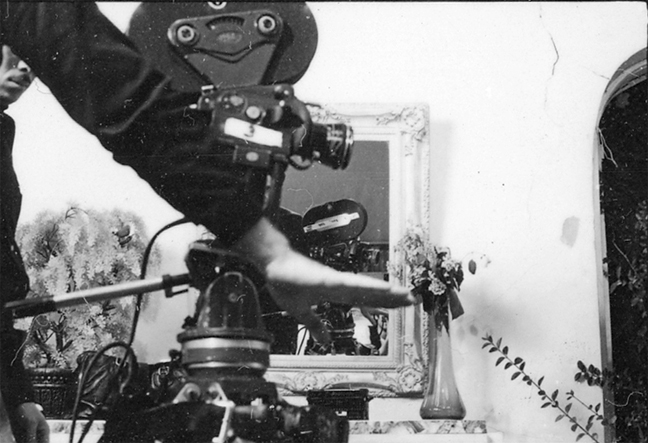 Previously unpublished Kirt Films production still (courtesy of Leonard Kirtman collection)
Previously unpublished Kirt Films production still (courtesy of Leonard Kirtman collection)
*
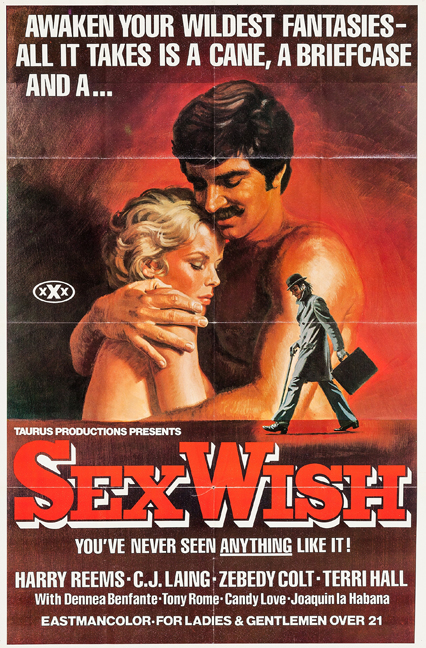
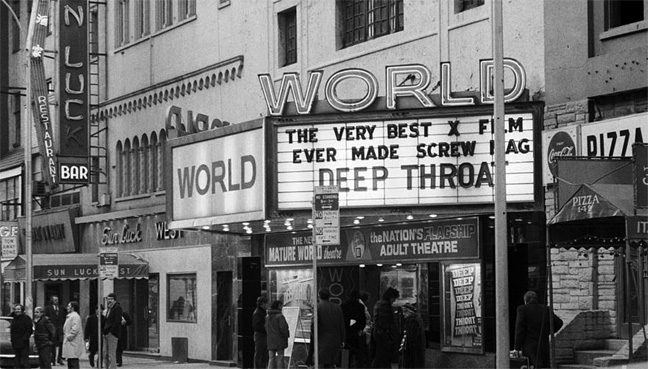
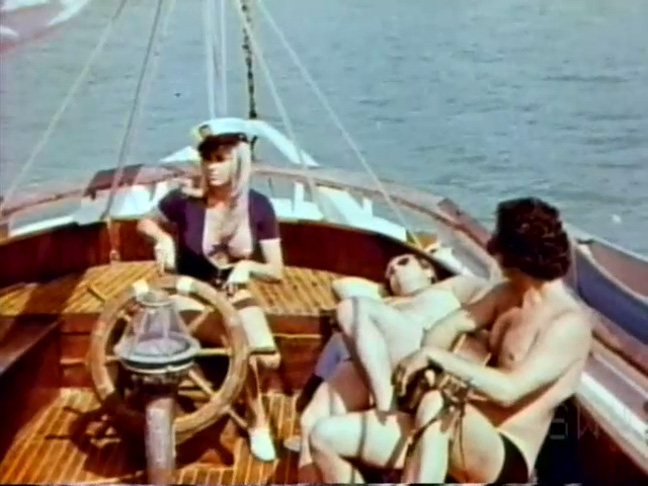
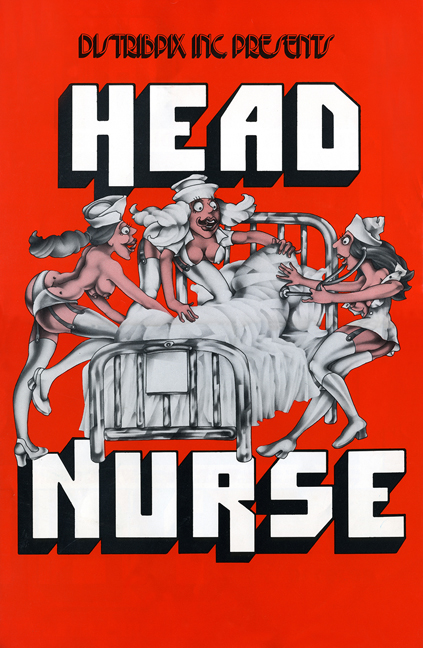
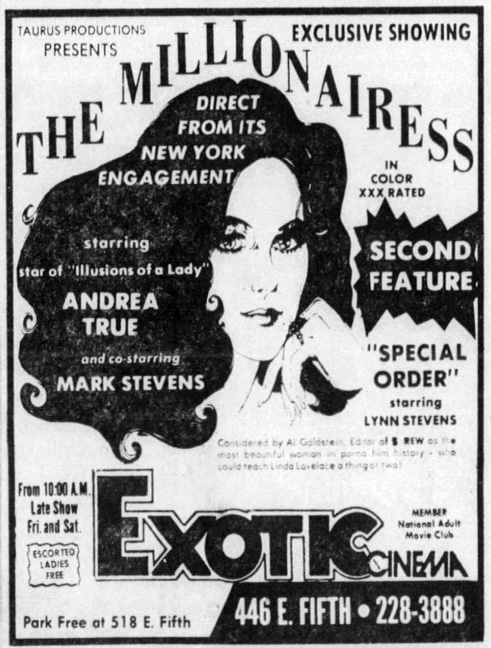
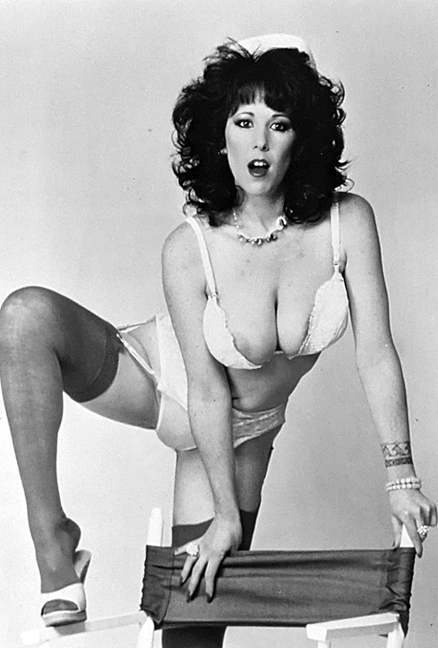
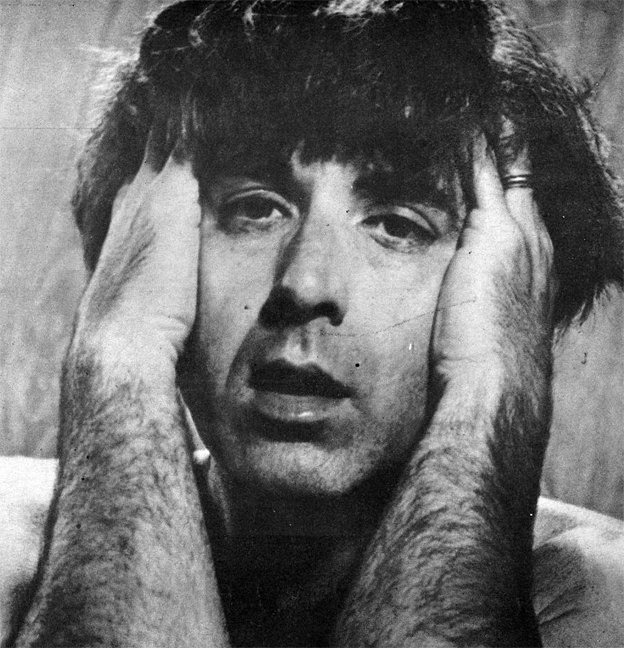

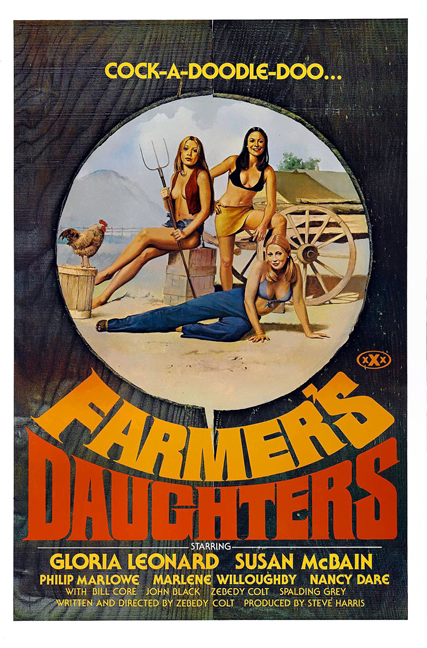
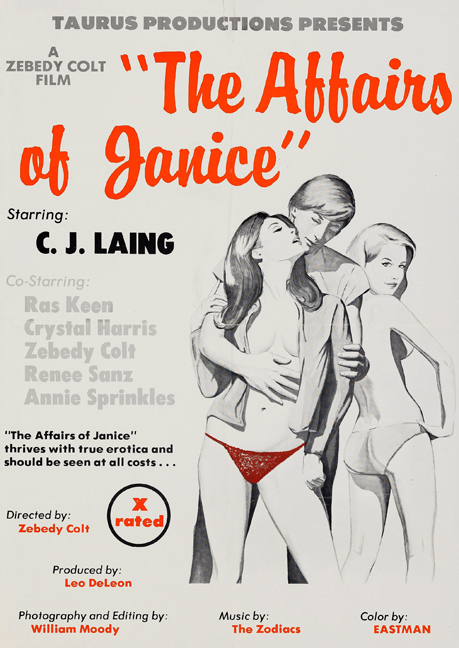
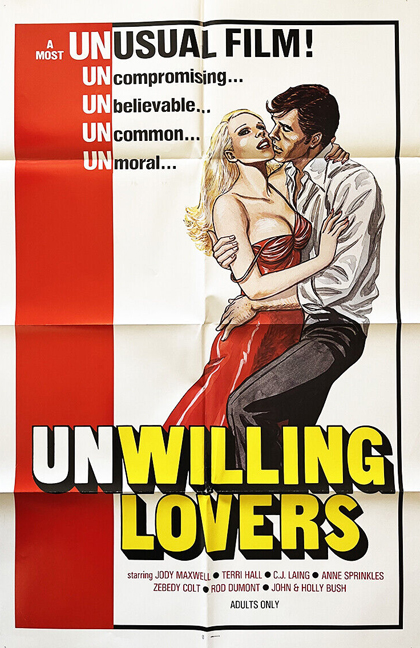
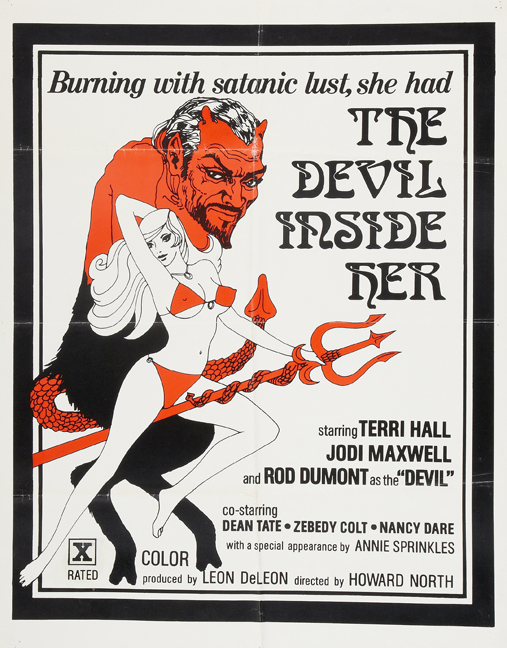
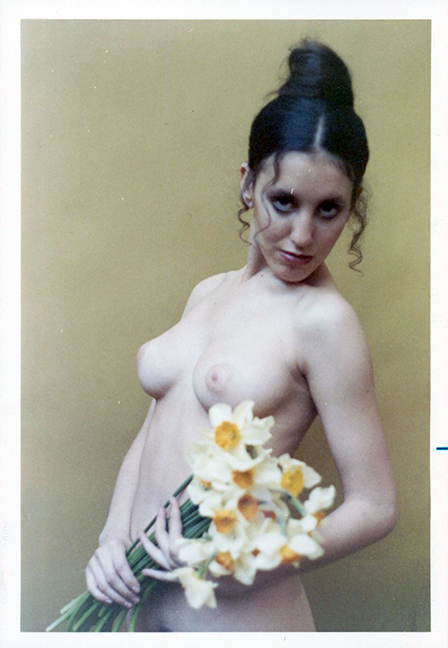
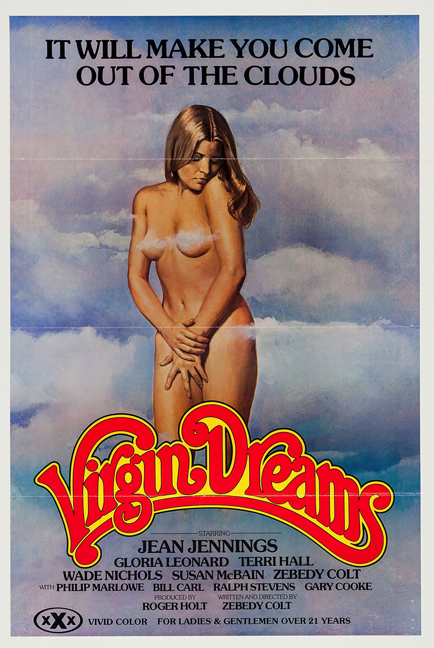
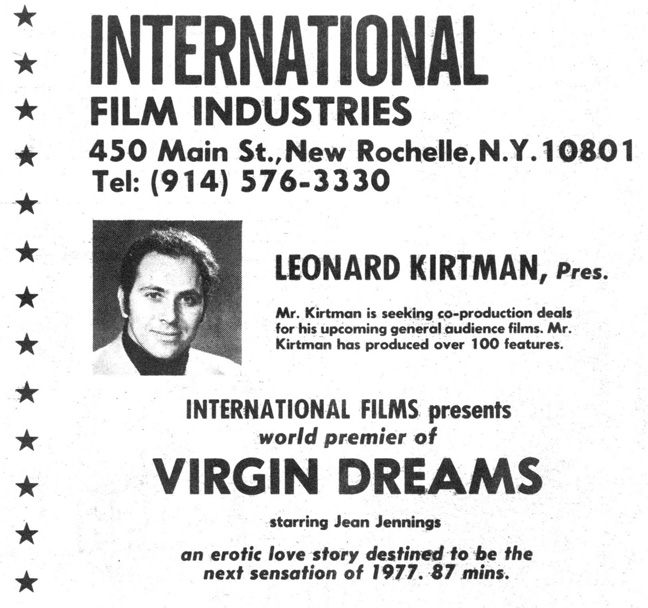
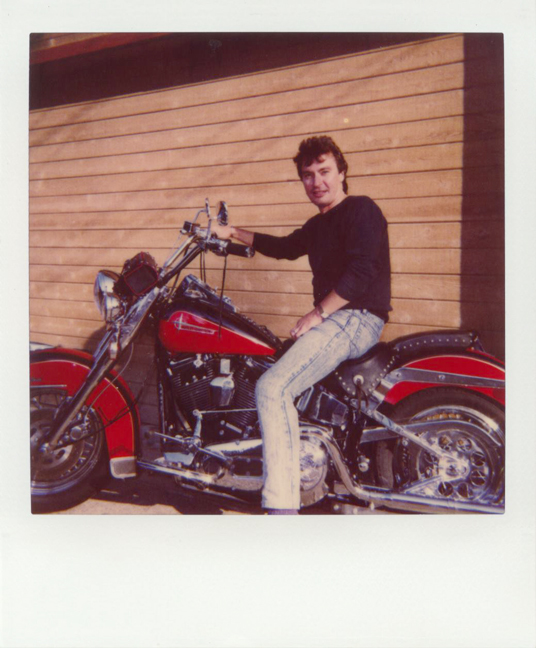
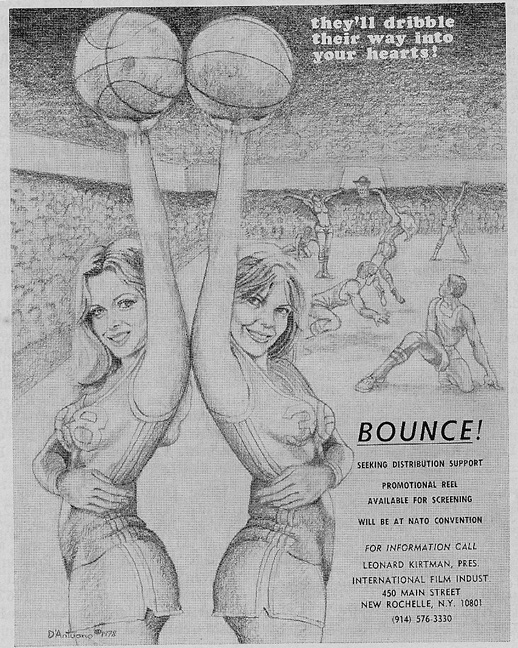
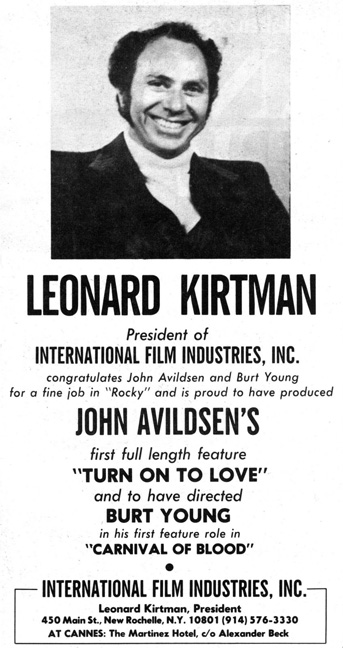
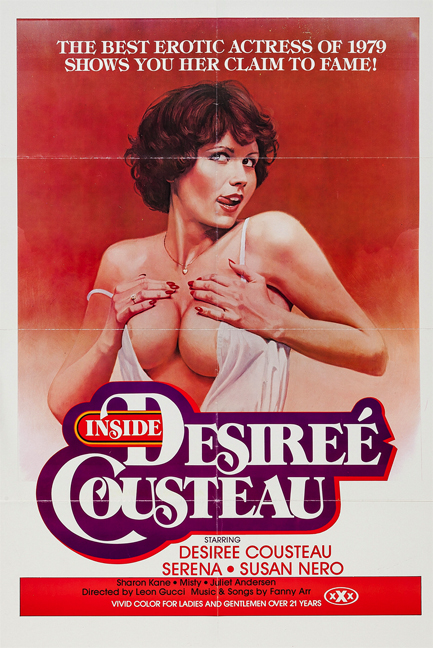
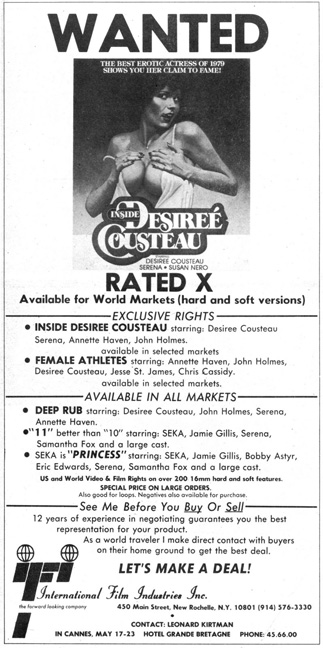
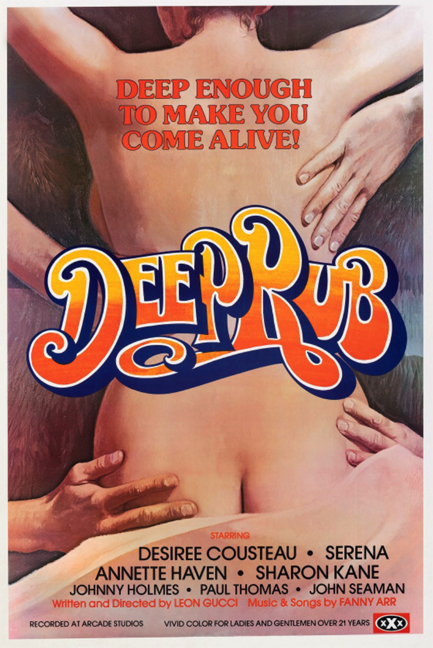
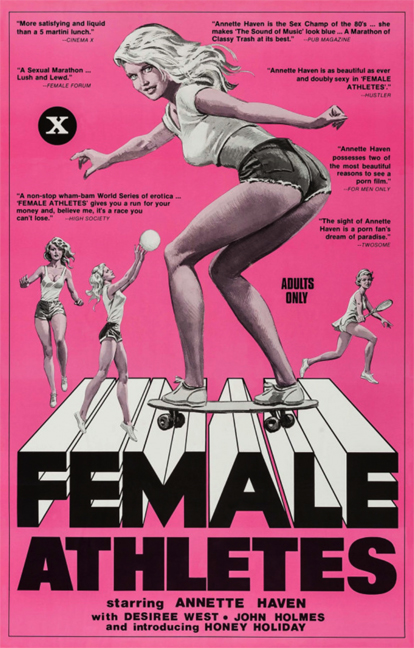
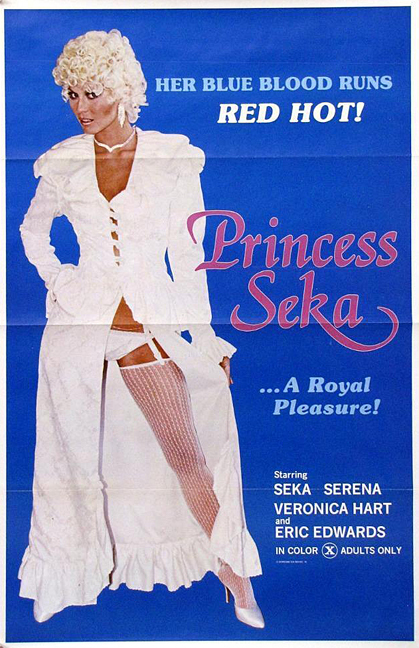
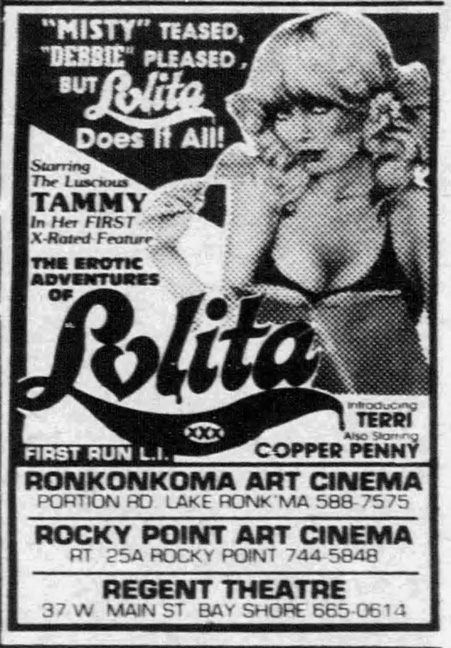
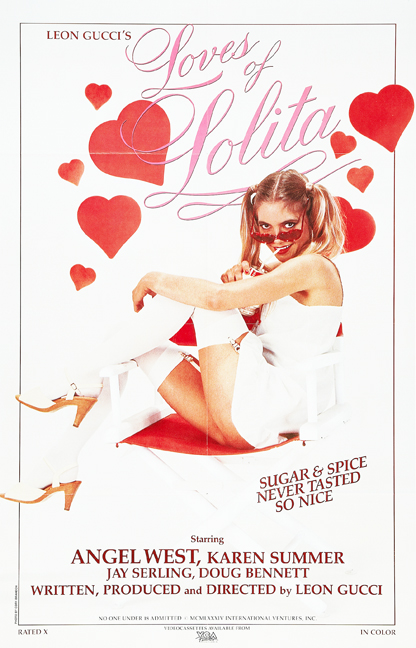
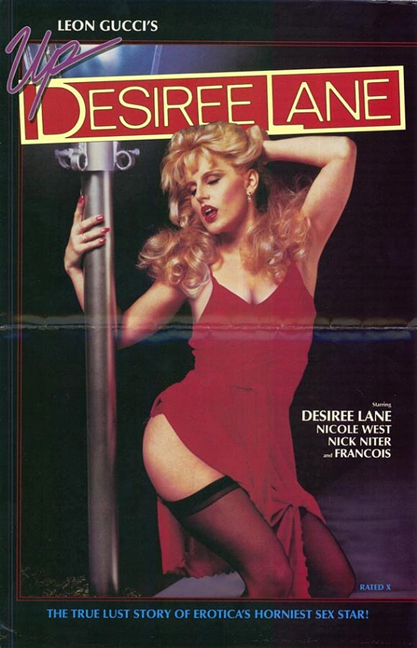
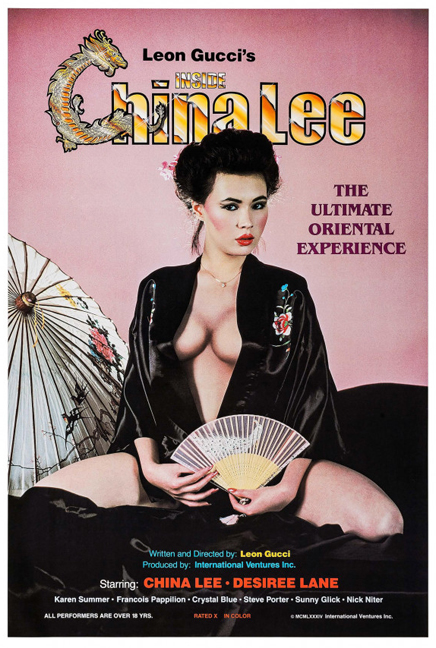
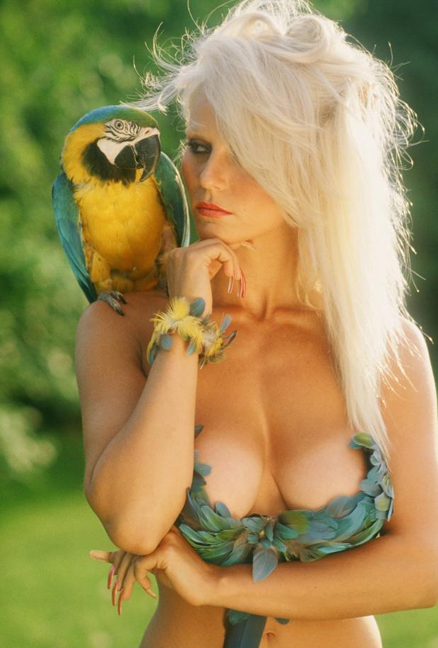
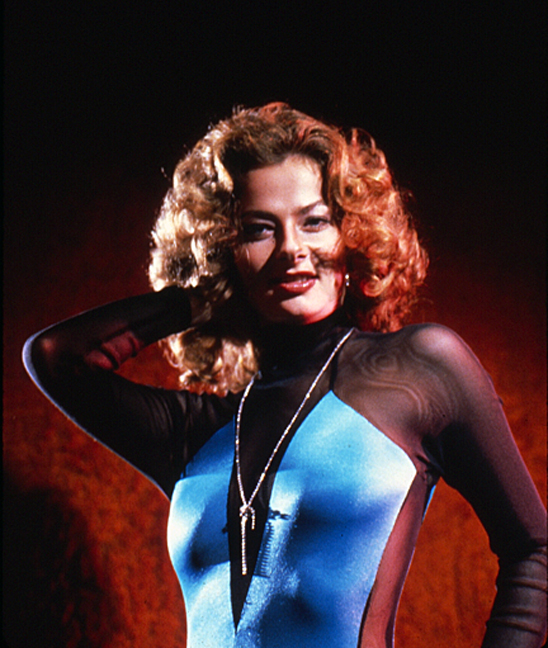
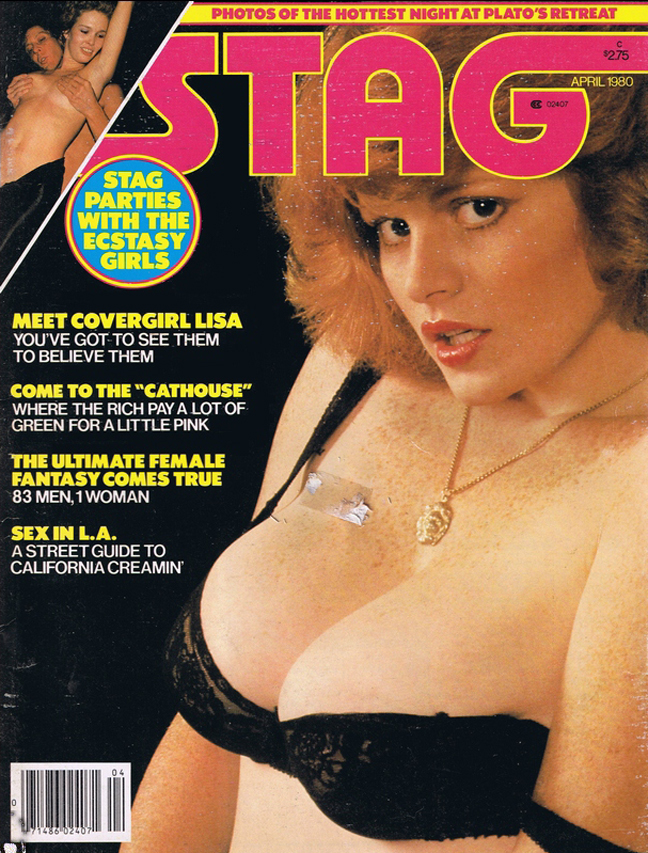

The REAL Boogie Nights!
This is the real deal, an exceptional interview that I thought I would never get the chance to read…………… and that’s something I’ve said many times!
Great information, and many gaps in my knowledge finally filled.
Eternal gratitude. Thank youse all.
Crazy good.
What makes this even more brilliant that I expected is Mr. Kirtman’s engaging character.. quite the opposite from what I expected. A sweet and generous raconteur.
This covered so many areas I wondered about…. and more. Truly an education.
just watched Carnival of Blood, its just thrilling. Its like John Cassavettes made a slasher. The events unfold and the camera is just kinda incidentally happens to be there. i wish I made it. the acting is naturalistic, they don’t look like performances mostly. checking out Headless Horseman next.
Great comparison with Cassavettes. Didn’t strike me till I glanced a Killing of a Chinese Bookie.
Business is business.
I was a projectionist from 1992 to 1997. I got out because I could see the writing on the wall. I was trained by and got to know all the projectionists who worked a lot of the Long Island porn theaters. And it was tricky back in the day because depending on who was running what town porn was either welcomed or condemned, in most towns condemned. So you had to show either softcore prints and if they weren’t softcore you had to cut them and make them softcore. These three theaters Ronkonkoma Art Theater, Rocky Point Art Theater and the Regent got away with showing hardcore. This didn’t mean that the theaters weren’t busted at different times, but they’d bounce back and go right back to it. One of the guys that trained me worked the Regent. The manager of the theater got word that a bust was coming and he left the theater knowing that whoever was working it would be pulled into the precinct. So this poor projectionist was hauled in because the manager cut out! Lol…I knew Harold Gussin, who ran porn theaters in Queens. He ran the Hewlett. I lived in Hewlett. He kept trying to sneak porn into the theater. He’d get busted, go back to second run for a while, then start showing porn again. The people that turned him in were from Hewlett Harbor. The bulk of them were pornographers, they didn’t want their product being shown were they lived, they meant these films for the tenderloin district. I wrote a huge article on Carnival of Blood in Exploitation Journal Vol. 2 #1 American masters edition, back issues still for sale on the Cinefear website. I like that film quite a bit. I had seen quite a bit of the Kirtman material on the big screen back in the day.
Keith! Brother George from Brains on Film. Manager sounds like a douche. I had a friend who worked as a projectionist for the cinema in Lexington, Kentucky, which was next to the Kentucky Theatre. The walkway above the theaters connected both projection areas when the manager there got wind a bust was gonna happen. He would actually stay and let my friend who was just 18 or 19 years old split so that he wouldn’t spend a night in jail
Also of interest, the Regent Theater in Bayshore is now the Boulton Center, an excellent venue for concerts. When I go there to see a show, often I hear the local people joking about it having been a porn theater. Lol… if those walls could only talk….
Answers many things I’d wondered about for a long time.
Nicely done.
Awesome Article Keep Up Good Work
The pieces of the puzzle of the early days are being slowly put together on this site. Always entertaining.Always a fascinating read.
I saw Deep Throat in Nashville TN when it was still banned in NYC, I thought it was a ho-hum boring film, came back to the films on 42 Street, those were better.
This guy is hilarious. I remember reading about Zebedy Colt on this site a while back. I sought out a film to sample and it turned out to be that Farmer’s Daughter’s movie. It was pretty twisted, weird, and gross. It’s kind of entertaining to know this guy made all that weird grossness.
Ha ha.
This brought back good memories of The Ronkonkoma Art Theater, which was next door to a gay bar called the Mark V. I lived behind the theater. I used to go to the Ronkonkoma every week for their double features cause I was crazy about Eric Edwards and I hoped he would be in the films. Back then, there was nothing like the internet to check the casts of these films. It was a very clean well kept theater. Most of the time there were only a few customers in the theater , so you had the whole place to yourself as far as seating went.The only bad aspect to it was that the sound quality from one of the projectors wasn’t very good. In retrospect now I realize that the first two times I went there they had a Chuck Vincent double feature followed by a Cecil Howard double feature. That was kind of cool that they played double features of directors. I think I have read that there is now a Multiplex theater where this movie house , the bar and the bowling alley used to be. Thank you for bringing back these good memories to me, based on that photo with the theaters listed.
First class reporting.
The subject of adult filmmaking has long been dominated by rumor, supposition, and guesswork perpetuated by fans and academics alike.
We are lucky to have this fabulous, rigorous – and entertaining – resource.
Thank you to all the team invloved.
This guy’s life should be a film – gloriously entertaining!
I know it’s impossible but imagine a Kirtman Boxset.
So great to hear about Zebedy Colt, ‘Sex Wish’ today is seen as a roughie classic, it’s interesting that it was just sort of just ‘another movie’ the 70’s seemed to be a time where everything was in-flux, ideas were thrown around and all sorts of films were made, amazing episode guys!!!
I’ve seen the film Love Witch. What I remember about it most was the female casting. The women were extremely attractive and sexy, and I don’t recall seeing any of them in other films.
Superb as usual, & this fellow is, surprisingly, seemingly quite charming, notwithstanding what Darby said to you guys about him. Best wishes!
I’d often wondered what happened to LEONARD KIRTMAN given how prolific he was in the adult-oriented film industry for some 20 years. He just disappeared. Nice to know what happened after he sold up his film library and took up real estate agency. (Isn’t the adult film actress ONA ZEE also a real estate agent? Think she is).
Judging by how many films he made it seems near-impossible to keep track of them all! Although it looks as The Rialto Report has done a good a job as his humanly possible!
So now he’s 86 years old. Not many ‘old-time’ folk remain alive from those heady days of the softcore-to-hardcore features from the late 1960s/early ’70s. I’m glad the busy newshounds from Rialto were able to track him down and have him tell his story. Cheers.